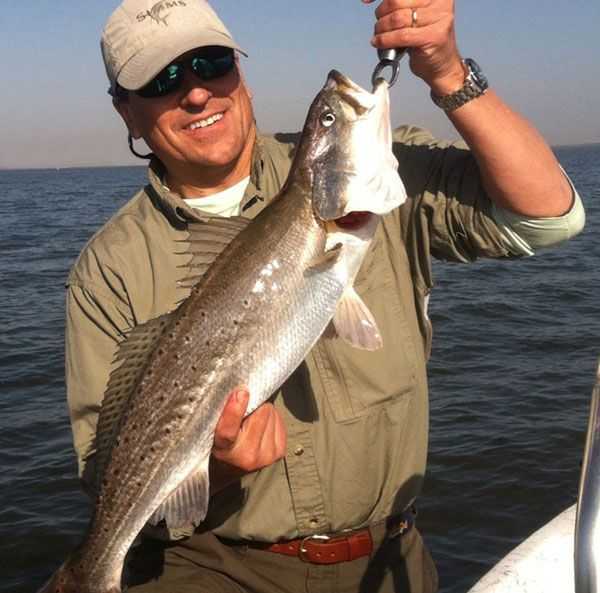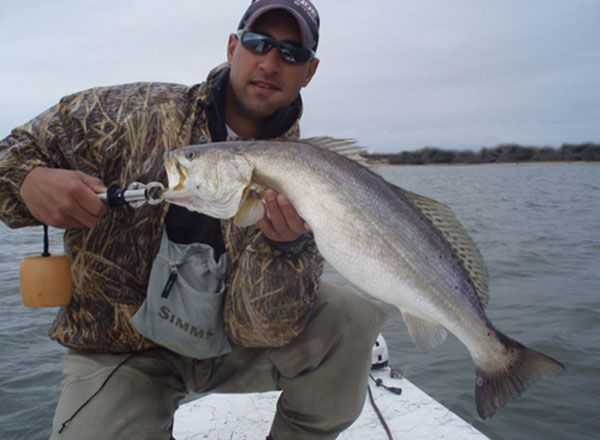Every season in fishing has a certain magic temperature or weather associated with it. The fall kicks off with that first cool front. Winter sets in around mid December with water temperatures falling into the 50s or much lower depending upon your region of the country, cold rains, snow, ice, north winds, and grey skies. Within each of these seasons there seems to be a certain day or week in which we feel the turn has happened and a new season is upon us.
Winter technically last from the winter solstice, December 21 to March 21—the spring equinox. But from a fish and fisherman’s standpoint, looking at fishing seasons from only a calendar basis is fairly imprecise. A fish’s life is very much centered on the length of the day’s photoperiod and water temperature. December 21 is the shortest day of the year and each day following the 21st we’ll see two things occur. One, each days photoperiod will increase by several minutes as the days get longer and longer. Two, the sun angle (angle at which rays of sun are hitting the water) will begin to reduce back toward being more perpendicular. Both of these criteria will cause more of the sun’s energy to enter the water where the fish live. We’ll also see temperatures rebound faster after each passing cold front, which will mean great things for those of us in relatively warmer climes who seek trophy speckled trout and redfish in the shallows. As the photoperiod and water temperature increases, so too will a fishes metabolism increase.
While many fishermen don’t see winter as ending until April, we see something altogether different in the fish’s world. While the water is still cold, perhaps even frigid after this winter’s icy mix, there is a change going on in the aquatic environment that begins December 22nd. If we hone our perceptions of the natural environment we’ll even sense it as well.
This past fall was epic in Galveston Bay for Capt. Brent Juarez. Reports from Brent and others like Capt. Shawn Herbert of Tidal Surge Lures indicated that many big fish stayed out deep moving with the masses of bait (shrimp and menhaden) as they exit the bays during the fall leading up to about mid to late December. In most years the typical fall bite, as dictated by the exodus of forage species above, ends relatively near this December 21 date.
Now that you’re reading this article a few days after the ‘turn’ of the winter solstice, what can you expect on the water in terms of fishing? With the temperatures rebounding more quickly after cold fronts, January can have some fantastic fishing for trophy speckled trout and redfish alike. Truth told, both can be found in a lot of the same areas. The fish will be ready to move up shallow on flats and some shorelines where they can take advantage of the sunlight warming the shallows over mud bottoms.
Redfish tend to ignore the cold-water temperatures, so as long as the tide pushes back into the bay after the cold air mass moves off and barometric readings moderate, you might see redfish first; trout won’t be far behind. Both will tend to seek mud bottoms as the mud’s insulative properties will allow it to ‘soak up’ the suns energy and give some of that heat back to the water—which the cold-blooded fish love. There are other reasons mud is a good choice as well. The mud consists of a higher percentage of clay particles and those clay particles hold more nutrients for algae, micro invertebrates, and benthic fauna—all things that bait and forage species feed on. So it’s only natural that mud bottoms will have more bait on them this time of year as well.
With the mass of baitfish having already left the bays, Brent and Shawn will look for big trout and redfish in areas of mud bottoms that are relatively shallow, and typically with deep water nearby. Their baits of choice will be slow sink Tidal Surge Maniac Mullets and soft plastic Split Tail Mullets rigged on 1/16th and 1/8th oz. jig heads tied to Tidal Surges’ new rod the Weapon. Light color lures on dark days or dirty water, and bright or natural colors in clear or bright conditions. Find the mud and the bait and you’ll likely find the fish.
[easy-social-share]

